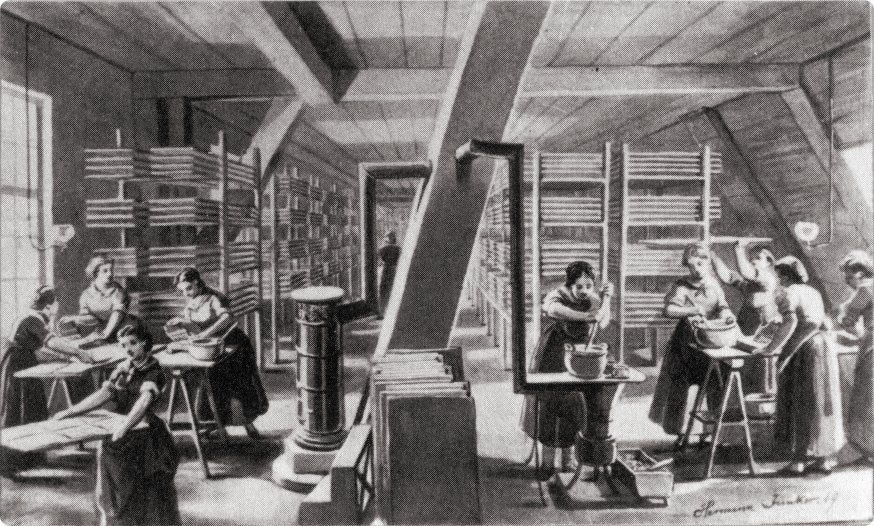Dondorf
The luxury playing card factory founded in Frankfurt am Main by Bernhard Dondorf in 1833 existed for 100 years.

B. Dondorf (1833-1933), Frankfurt am Main.
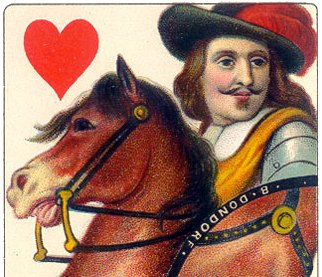
Bernard J. Dondorf was born in Frankfurt on 19th March, 1809, the son of Jewish immigrants. After serving his apprenticeship at C. Naumann printers, he opened a lithographic printing business in 1833. In the early days Dondorf traded in every kind of accessory for the printing industry: from printing presses, machines for stone engraving, lithographic stones, chalks and visiting cards to wine labels, stationery, inks and papers and he was also involved in security printing. Always on the lookout for innovations in the graphic arts industry, and with the rise of chromolithography, Herr Dondorf was in a position to enter the playing card and card game manufacturing business. Playing cards were first mentioned in advertisements in 1839. His first packs were produced in the 1840s by steel engraving and stencil-coloured lithography. In 1853 he purchased a steam engine and gradually increased his output of playing cards under the name “B. Dondorf, Frankfurt a. M.” In 1871 Dondorf opened a new factory in Bockenheimer Landstrasse. In 1872 Bernhard Dondorf retired leaving the business in the hands of his sons who continued to expand the business and build new factories.
The luxury playing card factory founded in Frankfurt am Main by Bernhard Dondorf in 1833 existed for 100 years and was a particularly attractive chapter in playing card history. Dondorf's chromolithographed cards are especially admired amongst collectors owing to the exceptional high standard of design and craftsmanship in their production. Many fine beards and moustaches can be seen in Dondorf's playing cards, along with fancy (pseudo-late medieval, baroque or rococo) period costumes and flamboyant characters, sometimes solemn, sometimes cheerful! Indeed Dondorf's output still influences playing card designs to this day.
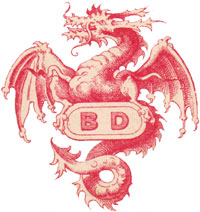
During their time in business as playing card manufacturers Dondorf produced a variety of standard and regional packs for home use and export; luxury packs, often with recognizable portraits of royalty or other notables; advertising and promotional decks; patience packs; souvenir packs with scenic Aces; fortune-telling packs, and so on. Dondorf also began producing card games (rather than playing cards) in around 1870 with a then fashionable “Question and Answer” game which was obviously aimed at children because all the illustrations were of children. Around the same time there were children’s quartet games and a musical game. By 1900 the “Struwwelpeter” game and “Wappen Quartet” were on the market. A “Black Peter” game appeared by 1905 but not so much with pairs of characters but pairs such as Trees, House and Cyclists. It seems that all the games cards were catalogued with a number beginning with a “3” and many are numbered between 314 and 352. This would suggest that at least 37 games were published up to the time when Dondorf were taken over. At this point Spears purchased the rights to the card games and continued to publish the educational ones featuring flowers and animals etc.
- Cartes Comiques, c.1860
- Musikalisches Kartenspiel, 1862
- Four Continents, c.1870
- Four Continents Patience
- Club Karte
- Java Speelkaarten No.17, 1879
- Whist No.122, “Rhineland”
- Mittelalter No.150 ¦ Piquet No.151 / Portuguese German-style deck
- Rokoko-Bild No.158, “Rococo”
- Whist No.160, “Baronesse”
- Whist No.170/171/172, “Empire”
- Schweizer-Trachten No.174 "Swiss Costumes"
- Whist No.178, “Stuart Zeit”
- Luxus Club-Karte No.184
- Englische Karten No.190, 1867-1895
- Whist No.192 / Shakespeare-Spielkarte
- Birma Karte No.194
- Tarot Microscopique, c.1870
- Tarot Microscopique, c.1920
- Medicaer Spielkarte No.272
- Naipes Finos No.304 Spanish Suited Pack
- Pierre l'Ebouriffé no.314
- Ende gut / Alles gut no.323
- Schwarzer Peter no.330
- Flora Quartett no.332
- Zoology Quartet no.335
- Wappen-Quartett no.340
- Fruits et Légumes No.342
- Die Vogel-Welt No. 351
- Figures Amusantes No.352
- Kinder-Karte
- Einköpfige Deutsche Spielkarte
- Doppelköpfige Deutsche Spielkarte / Gaigel-Karten
- Hauptstadte Spiel “Capital Cities”
- Wahrsage-Karten Lenormand Cards
- Lenormand Cards for H.P. Gibson, London
- Prinz-Karte No.402
- Deutsches Luxusbild No.417
- Neue Klubkarte No.422
- Jagerkarte No.465
- L'Hombre No.60 for Adolph Wulff, Copenhagen
- Luxuskarte No.75 for Adolph Wulff, Copenhagen, c.1928
- Whist No.80 for Adolph Wulff, Copenhagen, c.1928-35
- Poker No.140 for Argentina Compañia General de Navegación
- Promotion deck for Saks & Company, New York, c.1930
- Prussian pattern manufactured by Dondorf GmBH, c.1930
- “Hundertjahrkarte” 100th Anniversary pack, 1933
- Superfine Playing Cards No.1101, c.1930
- Dondorf patience book
For printing playing cards the number of colours is an important determinant of quality: four or five for the cheapest and about 15 for the finest varieties. For lower grade cards letterpress printing would be used, but for higher quality, luxury cards, chromolithography was more suitable, so that the intricacies of the colours, as well as cleanliness and accuracy, could be achieved. Before printing the images are separated into the different colours, which are successively printed from different plates with a high degree of precision to achieve the final effect. If this is not the case, the contours of the images are out of focus. Other factors influencing quality are temperature and moisture content, which could stretch or distort the paper during printing.
In 1905 Dondorf became a limited company, and the name printed on playing cards changed to ‘Dondorf GmbH’ (‘Gesellschaft mit beschränkter Haftung’ which, translated literally, means a ‘company with limited liability’). 550 people were employed by Dondorf at that time, around the same time that the Joker and rounded corners began to appear in the decks.
The company's liquidation and sale of individual departments commenced in 1928: Flemming & Wiskott AG acquired the playing card manufacturing interests, operating under the name “B. Dondorf Spielkartenfabrik GmbH, Frankfurt” with plans to consolidate the business and expand exports. In 1933, the company's 100th anniversary, the business was renamed “Vereinigte Altenburger und Stralsunder Spielkartenfabriken AG” and production was gradually transferred to Altenburg. Several of Dondorf's house patterns were transferred to the new ownership and thus continued to be produced, along with Dondorf's dragon trademark. In 1937 the company name became “B. Dondorf Frankfurt / Main, Spielkartenfabrik in Altenburg / Thuringia”. In 1943, the remaining operations in Frankfurt were closed down.
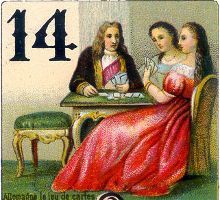
Above: Dondorf Tarock
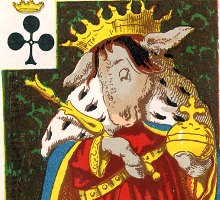
Above: Cartes Comiques
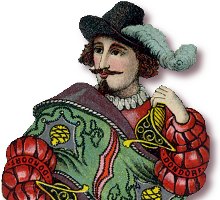
Above: Club Karte
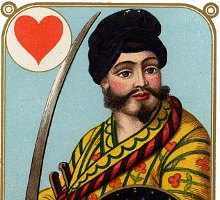
Above: Four Corners
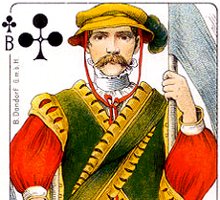
Above: Hauptstadte Spiel
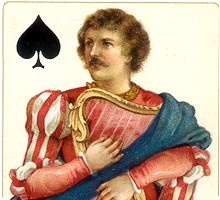
Above: Luxus Club-Karte No.184
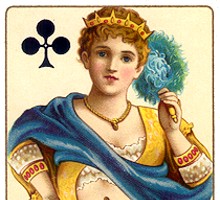
Above: Rococo pattern
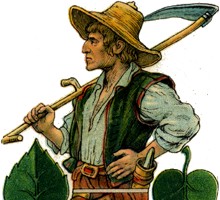
Above: Deutsches Luxusbild
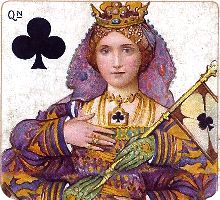
Above: Shakespeare Pack
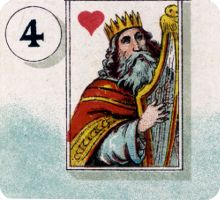
Above: Lenormand Cards for H.P. Gibson

Above: Saks & Co
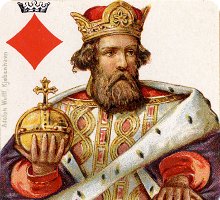
Above: Luxuskarte No.75
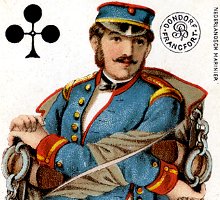
Above: Java Speelkaarten
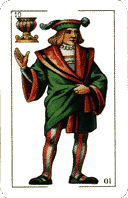
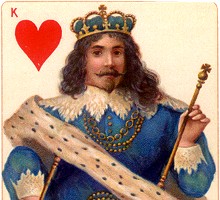
Above: Stuart Zeit
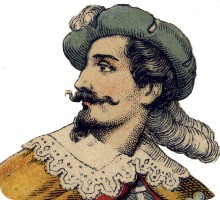
Above: Rhineland pattern
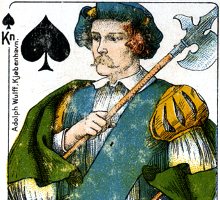
Above: L'Hombre No.60
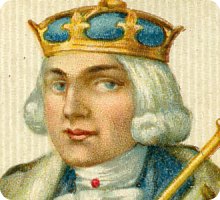
Above: Whist No.80
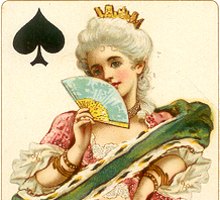
Above: Baronesse
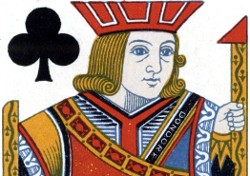
Above: Argentina Navigation Co
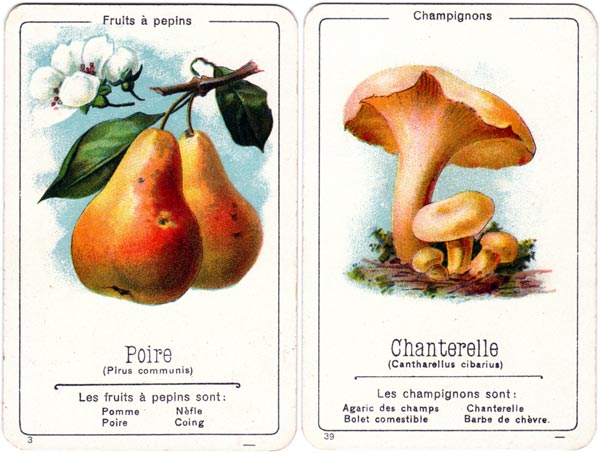
Above: Fruits et Légumes No.342

Above: a beautiful advertising card dated July 1932. This card was to celebrate the 11th. festival of the German Singers Association which was held in Frankfurt in 1932 more →
REFERENCES
Hoffmann, Detlef and Dietrich, Margot: "Die Dondorf'schen Luxus-Spielkarten", Harenberg, Dortmund 1983.

By Simon Wintle
Member since February 01, 1996
Founder and editor of the World of Playing Cards since 1996. He is a former committee member of the IPCS and was graphics editor of The Playing-Card journal for many years. He has lived at various times in Chile, England and Wales and is currently living in Extremadura, Spain. Simon's first limited edition pack of playing cards was a replica of a seventeenth century traditional English pack, which he produced from woodblocks and stencils.
Trending Articles
Popular articles from the past 28 days
Related Articles
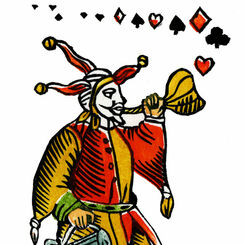
Woodblock and Stencil Joker
A limited edition art print of the 1984 woodblock joker.
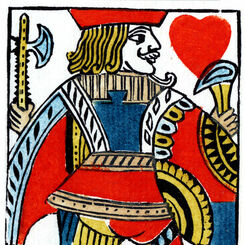
Woodblock and Stencil Jack of Hearts
A limited edition art print of the Jack of Hearts 1984 woodblock joker.
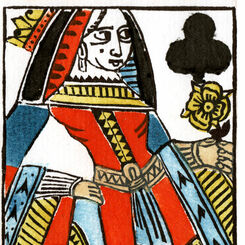
Woodblock and Stencil Queen of Clubs
A limited edition art print of the Queen of Clubs 1984 woodblock joker.
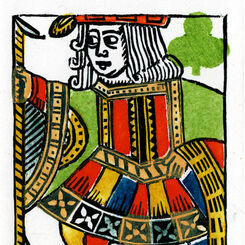
Woodblock and Stencil Jack of Clubs
A limited edition art print of the Jack of Clubs 1984 woodblock joker.
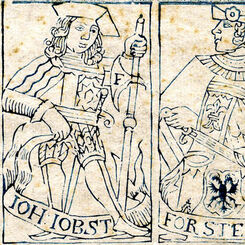
Uncut Sheet by Johann Jobst Forster
A proof sheet containing twelve court cards of conventional French type.
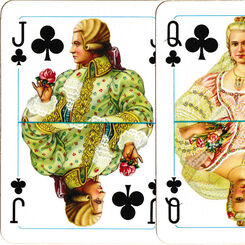
Poker Lusso
Richly costumed courts on a luxury poker pack from Masenghini.
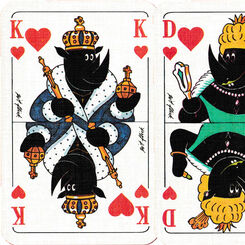
Mit Rhino auftrumpfen
Black rhinos on a publicity pack for Armstrong, a flooring company, with comic designs by Pit Flick....
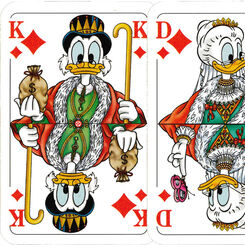
Walt Disney Cards II
Mickey, Minnie, Pluto and other familiar Disney characters.
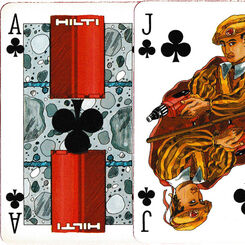
Hilti I
Promotional pack for Hilti power tools, with courts in medieval costume and non-standard pips.
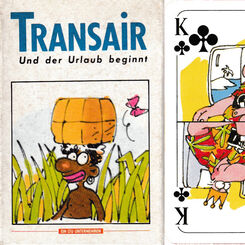
Transair
Humorous designs promoting Transair, a German charter flight operator.
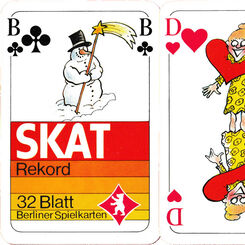
Merz Pharma Skat
Comic designs promoting Merz Pharma, a German drug company.
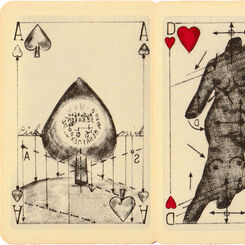
escART, ec-ART, SKAT
Fully illustrated pack printed from etchings by Johannes Vennekamp.
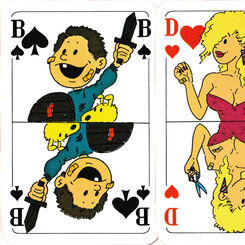
Hansaplast®
Advertising pack for Hansaplast, with comic courts sporting sticking plasters.
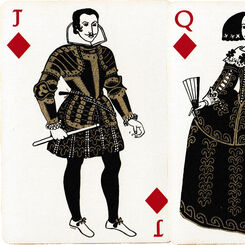
Loewe: Moda Europea Siglo XVII
Luxury pack for the Spanish fashion house Loewe, with 17th century costume designs by Margot Hamilto...
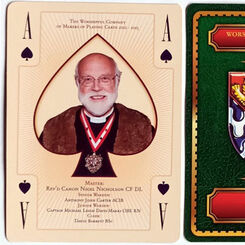
Past Masters’ Association Presentation Pack
The Worshipful Company of Makers of Playing Cards Past Masters’ Association Presentation Pack, 2013....
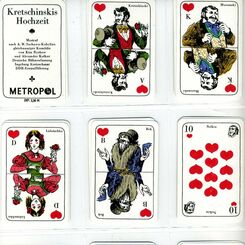
Wedding of Krechinsky • Свадьба Кречинского
A pack of cards depicting characters from the famous play "The Wedding of Krechinsky" by Sukhovo-Kob...
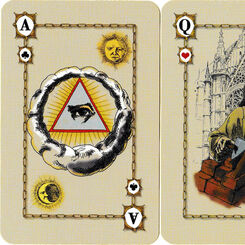
Freimaurer Spielkarten / Masonic playing cards
Masonic playing cards created by Ivan Wojnikow, 2004.
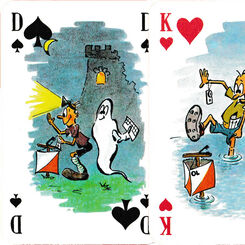
Orientierungslauf Skat
Humorous designs by Helmut Härtelt on the subject of orienteering.
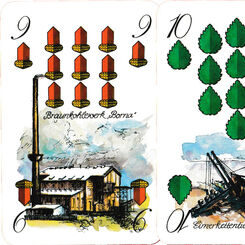
Borna Skat
Publicity pack for the Saxon town of Borna, with designs by Andreas Wachter.
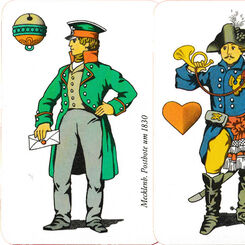
Postgeschichte
A celebration of different postal systems in Germany from 1630 to 1850, with designs by Volker Hartm...
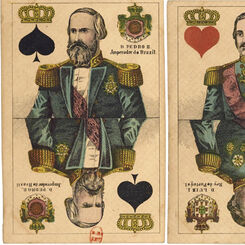
Kings and Queens of Brazil & Portugal
Historical playing cards by C. L. Wüst depicting monarchs of Brazil and Portugal.
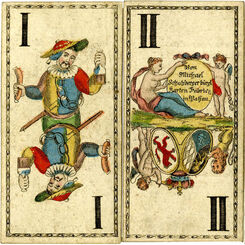
Mythological tarot by Michael Schatzberger
Mythological tarot by Michael Schatzberger, Passau, Bavaria, early 19th century.
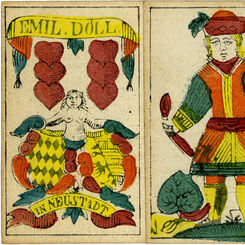
Ansbach pattern by Emil Doll
Later Ansbach or Nürnberg pattern by Emil Doll, Neustadt.
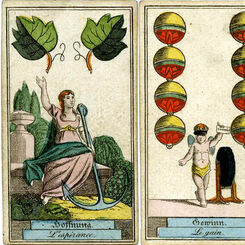
Cartomancy deck by Johann Ernst Backofen
German-suited Cartomancy deck published by Johann Ernst Backofen, Nürnberg.
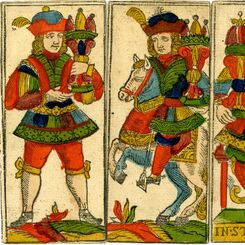
Trappola pack by Joseph Fetscher
Trappola pack published by Joseph Fetscher, Graz, 1739.
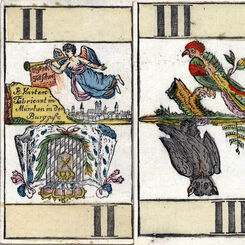
Animal Tarot by Joseph Fetscher
French-suited Natural History Tarot deck by Joseph Fetscher, Munich, c.1820.
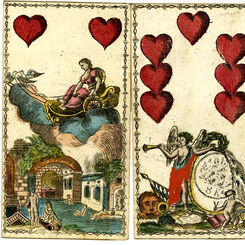
Heathen Wars
German-suited ‘Heathen War’ playing cards published by Joseph Fetscher, Munich, c.1820.
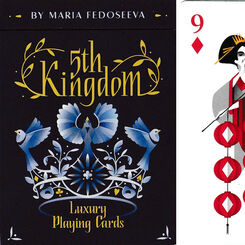
5th Kingdom playing cards
5th Kingdom Luxury playing cards designed by Maria Fedoseeva, USA, 2020.
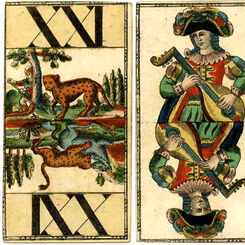
Mythological and Allegorical tarot
Mythological and Allegorical tarot produced by Peter Paul Fetscher junior, Munich.
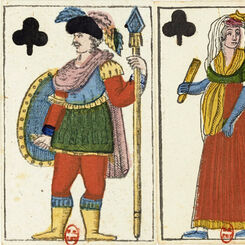
Fantasy deck by Joseph Fetscher
Fantasy French-suited pack produced by Joseph Fetscher, Munich, c.1825.
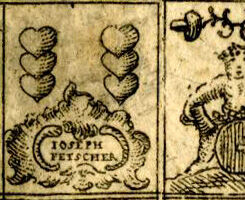
Miniature playing cards by Joseph Fetscher
Uncut sheet of miniature Bavarian playing cards by Joseph Fetscher.
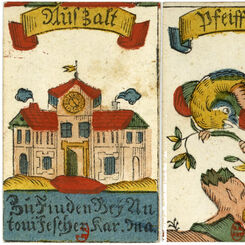
Vogelspiel
Vogelspiel, a German card game known as the “cuckoo game” also known as “Gnau”.
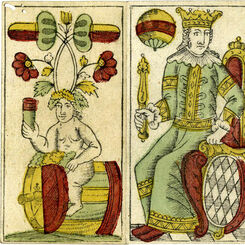
Bavaria pattern
Classic German-suited Bavarian pattern by Joseph Fetscher, Munich, early 19th century.
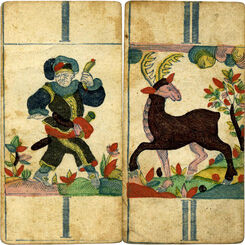
Animal Tarot by Andreas Benedict Göbl
French-suited Animal Tarot deck produced by Andreas Benedict Göbl, Munich.
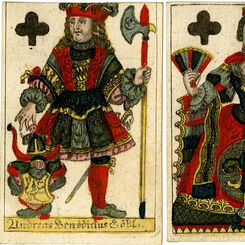
Standard French-suited Bavarian deck by Göbl
French-suited Bavarian deck by Andreas Benedict Göbl, late 18th c.
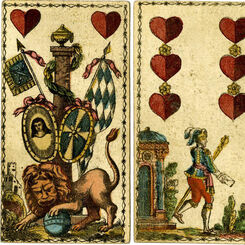
Historical playing cards by Joseph Fetscher
Historical playing cards by Joseph Fetscher, Munich, c.1820.
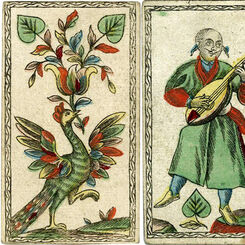
Illustrated piquet cards
Bavarian piquet cards with oriental illustrations produced by Andreas Benedict Göbl, Munich, late 18...
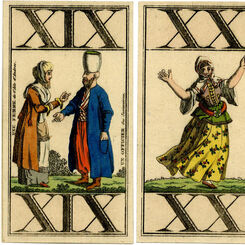
Costumes of Turkey Tarot
‘National Costumes of Turkey’ tarot by Industrie Comptoir, Leipzig, c.1800-1825.
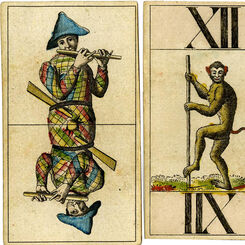
Natural History Tarot
Natural History Tarot published by G M, Germany, early 19th C.
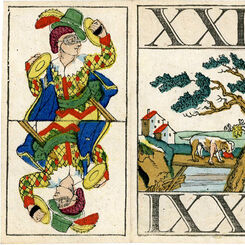
Æsop’s Fables tarot
French-suited Æsop’s fables tarot produced by Leipzig Industrie Comptoir, c.1800-1825.
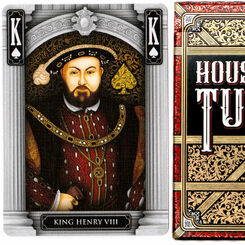
House of Tudor
Randy Butterfield's House of Tudor playing cards feature detailed art in a high-quality collectible ...
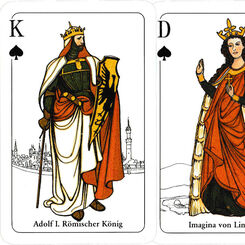
Das Nassauische Kartenspiel
Pack conceived by Berthold Conradi, commemorating the 700th anniversary of the granting of town righ...
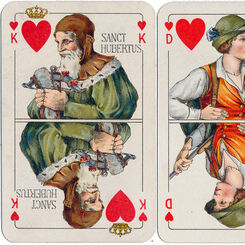
Jägerkarte Nr.465
Dondorf Jägerkarte Nr. 465 playing cards dedicated to the theme of hunting, c.1930.
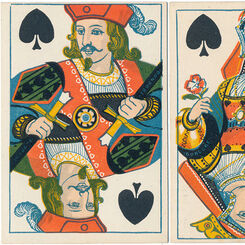
Englische Karten nr.190
Dondorf Nr.190“Englische Karten”, 1867-1895.


